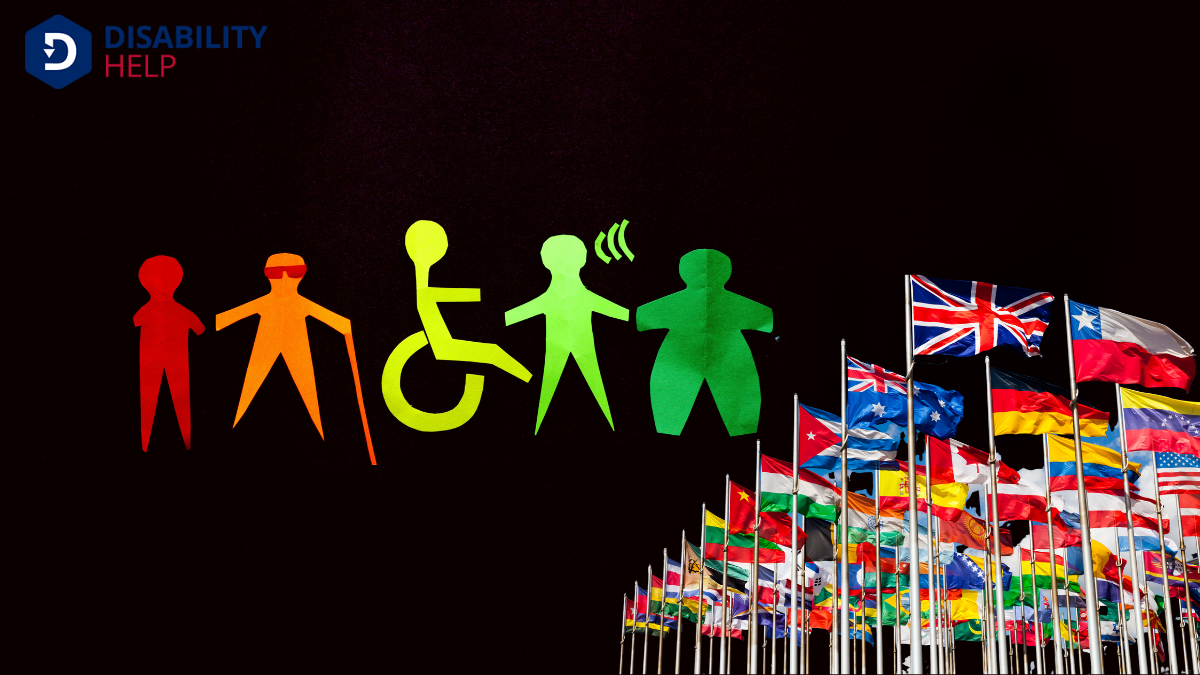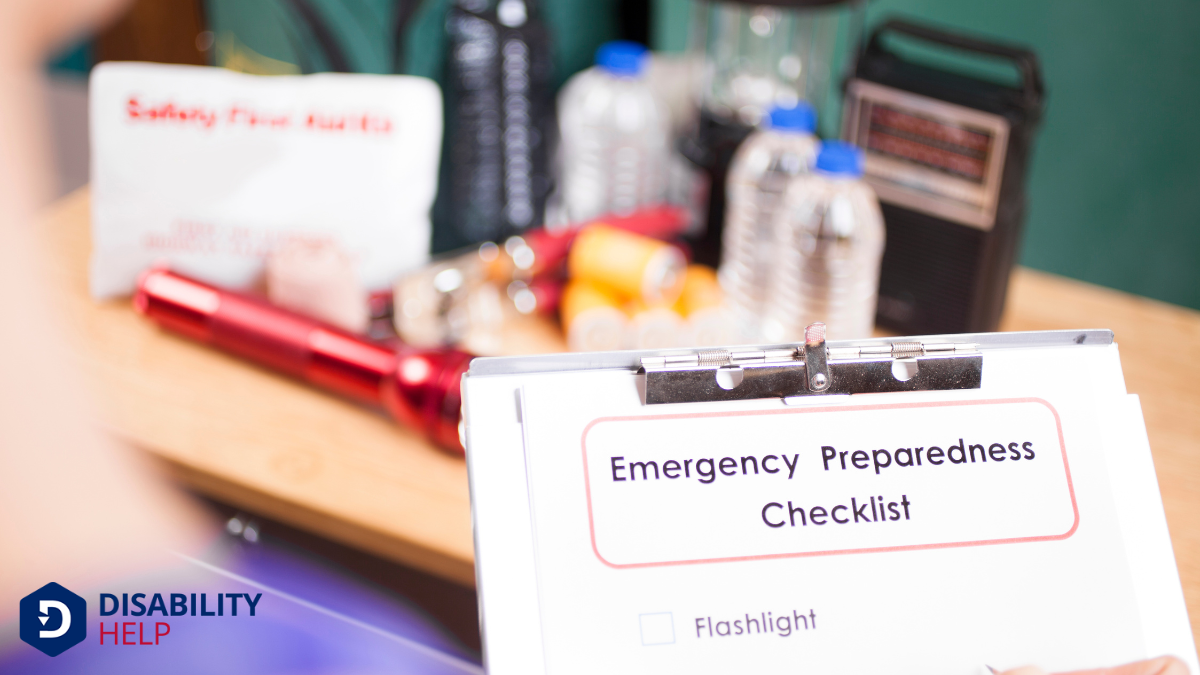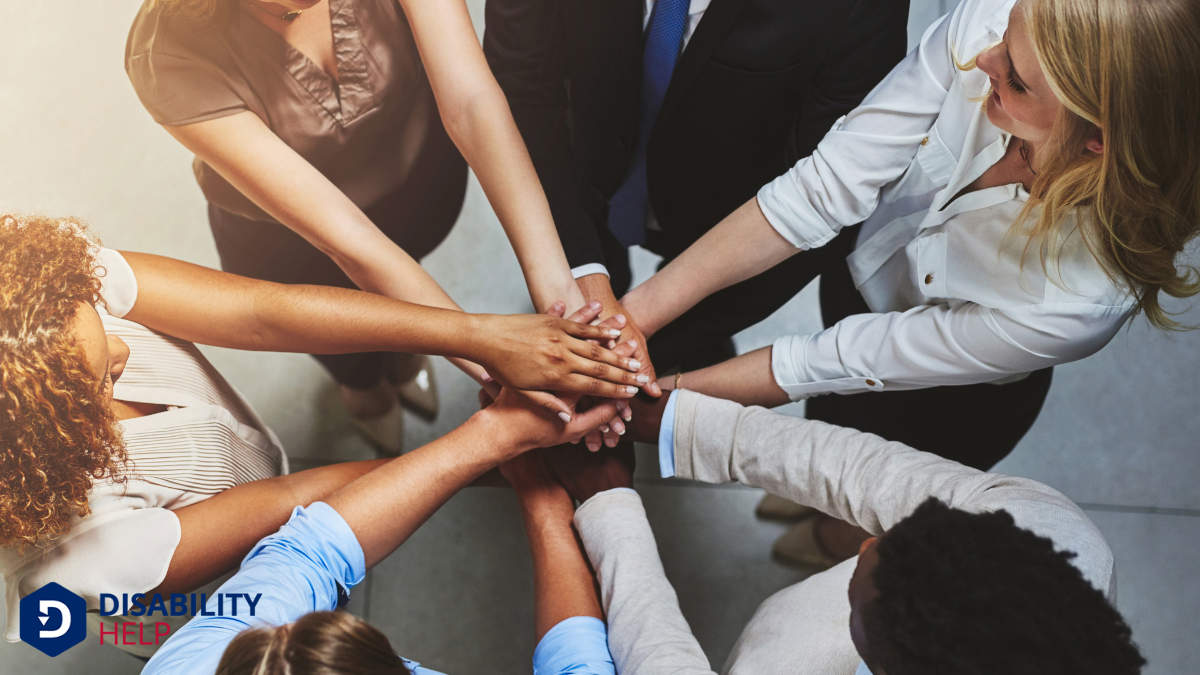When we consider emergency situations, it's vital that we comprehend the protections available for disabled individuals. International conventions and national legislation, like the UN Convention on the Rights of Persons with Disabilities, play a significant role in ensuring these protections. But how do these frameworks translate into real-world actions, especially at the local level? By examining inclusive planning and specialized training for responders, we can uncover how these measures truly impact safety and well-being.
Key Takeaways
- International conventions like the CRPD set global standards for inclusive emergency planning for disabled individuals.
- National laws, such as the ADA, mandate equitable access to emergency services and facilities for disabled people.
- Local governments implement tailored communication strategies and improve physical accessibilityThe design of products, devices, services, or environments to be usable by people with disabilities.... in evacuation routes and shelters.
- Technological solutions, including text-to-speech devices and vibrating alert systems, assist disabled individuals during emergencies.
- Continuous evaluation and training for emergency responders ensure effective assistance for disabled individuals in crisis situations.
Understanding Disability Rights in Emergencies
When emergencies strike, understanding disability rightsThe legal and human rights afforded to individuals with disabilities, often the focus of advocacy an... becomes essential to guarantee everyone’s safety and well-being.
We must prioritize creating inclusive emergency plans that respect and uphold the rights of people with disabilities. This means designing shelters and evacuation routes that are accessible, guaranteeing communication methods are clear for everyone, and providing necessary assistance without hesitation.
We all have a responsibility to recognize that during crises, the needs of disabled individuals may differ, requiring specific accommodationsModifications or adjustments in healthcare settings to support patients with disabilities..
By staying informed and proactive, we can help bridge the gaps in current emergency protocols. Let's guarantee our communities are prepared to support everyone equally, fostering a culture of inclusivity.
Together, we can make a significant difference by advocating for thorough and accessible emergency services for all.
The Role of International Conventions

Though often overlooked, international conventions play a pivotal role in shaping how we respond to the needs of disabled individuals during emergencies.
They establish global standards, ensuring that we all work towards inclusive and thorough emergency planning. The United Nations Convention on the Rights of Persons with Disabilities (CRPD)An international treaty that promotes and protects the rights of people with disabilities. is a prime example.
It urges countries to incorporate disability considerations into all aspects of emergency preparedness and response.
National Legislation and Policy Frameworks
National legislation and policy frameworks are essential in ensuring that the rights and needs of disabled people are prioritized during emergencies. These legal structures guide how we prepare for, respond to, and recover from crises, making sure disabled individuals aren’t left behind.
In our country, laws like the Americans with Disabilities Act (ADA)A U.S. law that prohibits discrimination against individuals with disabilities in all areas of publi... mandate equitable access to emergency services and shelters. They require that emergency plans include provisions for accessible communication and transportation.
Policies also emphasize training for emergency responders, ensuring they can effectively assist disabled individuals. By aligning national policies with international conventions, we reinforce a commitment to inclusivity.
Let’s remember, it’s our collective responsibility to advocate for thorough policies that empower and protect everyone, especially during emergencies.
Local Government Initiatives and Programs
Local governments play an essential role in implementing initiatives and programs that directly address the needs of disabled people during emergencies.
We often see them developing tailored communication strategies to guarantee everyone receives critical information. This might include accessible alerts and warnings through text, voice, or visual aids. They also work on improving physical accessibility, guaranteeing evacuation routes and shelters accommodate all disabilities.
In some areas, local authorities partner with disability organizations to create volunteer networks that assist during crises.
We should also acknowledge efforts to provide specialized training for first responders, equipping them with the necessary skills to support disabled individuals effectively.
Inclusive Emergency Preparedness Planning

As we focus on inclusive emergency preparedness planning, let's prioritize accessible communication strategies that guarantee everyone receives essential information clearly and promptly.
We should also address shelter and evacuation accessibility, making certain facilities and routes are designed to accommodate all individuals, including those with disabilities.
Accessible Communication Strategies
While emergencies can be intimidating for everyone, prioritizing accessible communication strategies guarantees that people with disabilities receive essential information swiftly and clearly.
We must make certain that our communication methods are diverse and inclusive. This means utilizing multiple platforms like text, audio, and visual alerts. By doing so, we can reach individuals with a range of disabilities, including those who are deaf, hard of hearing, blind, or have cognitive impairments.
It's vital that our emergency alerts are straightforward and easy to understand. Using plain language helps prevent confusion and guarantees everyone knows what actions to take.
Additionally, collaboration with disability organizations can provide valuable insights into effective communication strategies. These efforts make certain that no one is left in the dark when emergencies arise.
Shelter and Evacuation Accessibility
Securing shelter and evacuation plans that are accessible is essential for inclusive emergency preparedness.
We must make sure everyone, including those with disabilities, can safely access shelters and evacuation routes. By focusing on accessibility, we enhance safety and dignity for all community members.
Here are three key considerations:
1. Physical Accessibility: Shelters should have ramps, wide doorways, and accessible restrooms to accommodate mobility devices.
Evacuation routes need to be clear and navigable for everyone.
2. Communication Access: We need to provide information in multiple formats, such as Braille, large print, and sign language, making certain everyone understands evacuation procedures.
3. Training and Drills: Regular emergency drills should include scenarios involving disabled individuals to identify gaps and improve response strategies.
Accessibility of Emergency Services and Facilities
When emergencies strike, ensuring that services and facilities are accessible to everyone, including those with disabilities, is essential.
We need to focus on inclusive communication strategies, providing accessible emergency shelters, and ensuring transportation options are available for disabled individuals.
Inclusive Communication Strategies
To effectively safeguard disabled individuals during emergencies, we must prioritize inclusive communication strategies that guarantee the accessibility of services and facilities. Clear communication guarantees everyone understands emergency procedures and can act accordingly.
Here’s how we can achieve this:
- Multimodal Communication: Use visual, auditory, and tactile methods to disseminate information, making certain it reaches those with varying disabilities. This might include text alerts, braille materials, and sign language interpreters.
- Training Emergency Personnel: Equip first responders with the skills needed to communicate effectively with disabled individuals, including basic sign language and knowledge of assistive technologies.
- Accessible Information Sources: Make certain websites and emergency applications comply with accessibility standards, allowing users to access crucial information through screen readers and other assistive devices.
Accessible Emergency Shelters
Building on our focus on inclusive communication, we must also address the need for accessible emergency shelters to protect disabled individuals effectively. Ensuring these shelters cater to everyone's needs isn't just a necessity; it's a right.
We should evaluate whether shelters have ramps and accessible restrooms, and if they're equipped with visual and auditory aids. It's vital to have trained staff who can assist disabled people, ensuring their safety and comfort during distressing times.
Moreover, we need to verify that information about these shelters is disseminated in formats accessible to all, such as braille, large print, or digital formats compatible with assistive technologies.
Transportation for Disabled Individuals
Although emergency situations demand swift action, we must guarantee that transportation for disabled individuals is seamless and inclusive. By doing so, we secure everyone’s safety and dignity.
Let’s look at essential components for accessible emergency transportation:
- Adapted Vehicles: Emergency transport vehicles should be equipped with ramps, lifts, and securement systems to accommodate wheelchairs and mobility aidsDevices designed to help individuals move around more easily, such as canes, walkers, or wheelchairs..., ensuring safe and comfortable travel.
- Trained Personnel: Drivers and emergency responders need proper training to assist individuals with various disabilities, understanding how to communicate and handle equipment safely.
- Clear Communication: It’s crucial to establish reliable channels to inform disabled individuals about transportation options and procedures. This includes accessible formats like braille, large print, and digital alerts.
Training and Awareness for First Responders
First responders play an essential role in guaranteeing the safety and well-being of everyone during emergencies, which makes their training and awareness of the needs of disabled individuals fundamental.
We need to ascertain they’re equipped with the knowledge and skills to accommodate various disabilities, from mobility impairments to sensory challenges. Understanding the unique needs of disabled individuals allows responders to tailor their approach, providing effective, compassionate care.
Training should include simulations and real-life scenarios that foster empathyThe ability to understand and share the feelings of another, particularly important in understanding... and understanding. It’s imperative that responders can communicate clearly, using appropriate methods, such as sign language or visual aids.
Community Involvement and Advocacy

When communities come together, we amplify our ability to advocate for and protect disabled individuals during emergencies. Engaging actively in community efforts guarantees that all voices are heard, and our collective action can bring about significant change.
Here’s how we can make a difference:
- Education and Workshops: Hosting workshops for community members to understand the needs of disabled individuals during crises helps tailor our responses effectively.
- Collaboration with Local Organizations: Partnering with disability rights organizations can strengthen advocacyThe act of arguing in favor of, supporting, or defending the rights and interests of individuals or ... efforts and create thorough emergency plans that prioritize inclusivity.
- Public Awareness CampaignsEfforts to educate the general public about disability issues, often involving media, events, and so...: Raising awareness through campaigns educates the wider community about the unique challenges faced by disabled individuals, fostering a more supportive environment.
Together, our involvement and advocacy pave the way for safer, more inclusive emergency responses.
Technological Solutions for Enhanced Safety
Let's explore how technology can boost safety for disabled people during emergencies.
We can focus on emergency communication devices that guarantee everyone gets timely alerts and instructions.
Additionally, accessible transportation systems can be enhanced to provide swift and safe evacuation options for those with mobility challenges.
Emergency Communication Devices
Although emergencies can strike without warning, technological solutions like emergency communication devices greatly enhance safety for disabled individuals. We must understand how these tools provide critical support during crises.
- Text-to-Speech Devices: These gadgets convert written messages into spoken words, enabling those with speech impairments to communicate effectively with emergency responders.
- Vibrating Alert Systems: Designed for the hearing impaired, these devices alert users through vibrations when emergencies arise, ensuring they’re aware of immediate dangers.
- Location Tracking Apps: For those with mobility challenges, these apps help emergency personnel quickly locate individuals in distress, markedly improving response times.
Accessible Transportation Systems
Accessible transportation systems are essential for ensuring the safety and mobility of disabled individuals during emergencies. As we explore technological solutions, it’s crucial to focus on creating systems that cater to diverse needs. Innovations like GPS-enabled vehicles and apps specifically designed for disabled users can revolutionize how we approach emergency evacuations.
These tools can provide real-time updates, ensuring everyone reaches safety swiftly.
Let’s also consider the importance of training drivers in understanding and accommodating disabilities. This can make a significant difference when seconds count.
Evaluation and Improvement of Current Measures
When we evaluate the current measures in place for protecting disabled people during emergencies, it's clear that there's room for improvement.
We must guarantee that every individual receives adequate support and safety. To do this, let's examine three key areas for enhancement:
- Training: Emergency personnel need thorough training on the specific needs of disabled individuals. This includes understanding various disabilities and how to assist effectively.
- Communication: It's essential to develop accessible communication tools that provide timely warnings and instructions in formats suitable for everyone, including those with sensory impairments.
- Infrastructure: We should retrofit existing emergency shelters and facilities to confirm they're fully accessible, addressing barriers like narrow doorways or inaccessible restrooms.
Frequently Asked Questions
How Can Disabled Individuals Prepare Personally for Emergencies?
We should emphasize personal preparedness for emergencies by creating a plan, assembling a go-bag with essentials, and staying informed on local alerts. It's vital to build a support network and practice the plan regularly for confidence.
What Resources Are Available for Disabled People During Evacuations?
We can access various resources during evacuations, like accessible transportation and shelters, communication aids, and service animalAn animal that is trained to perform tasks for the benefit of a person with a disability, protected ... accommodations. It's essential to connect with local agencies for specific assistance tailored to individual needs and guarantee everyone's informed.
How Do Emergency Shelters Accommodate Individuals With Different Disabilities?
We guarantee emergency shelters are inclusive by providing ramps, accessible restrooms, and trained staff to assist. Let’s advocate for more resources and adaptations, so everyone’s needs are met during crises. Together, we can make a difference.
Are There Specific Communication Tools for Disabled People in Emergencies?
We need to guarantee that everyone can access emergency information. Let's use tools like text alerts, visual aids, and sign language interpreters. By doing this, we make certain everyone stays informed and safe during emergencies.
What Role Do Caregivers Play in Emergency Situations for Disabled Individuals?
Caregivers guarantee disabled individuals' safety by planning, advocating, and providing essential support during emergencies. Let's trust in their expertise, guaranteeing everyone's needs are met. Together, we can create a safer environment for our disabled community members.
Conclusion
In emergencies, we can’t overlook the unique needs of disabled individuals. By leveraging international conventions, national laws, and local initiatives, we’re making strides toward inclusive emergency preparedness. Let’s continue collaborating with disability organizations, enhancing first responder training, and embracing technological advancements. Together, we can guarantee that everyone, regardless of ability, is safe and supported during crises. Our collective efforts will create a more resilient and inclusive society for all. Let's keep pushing forward!






